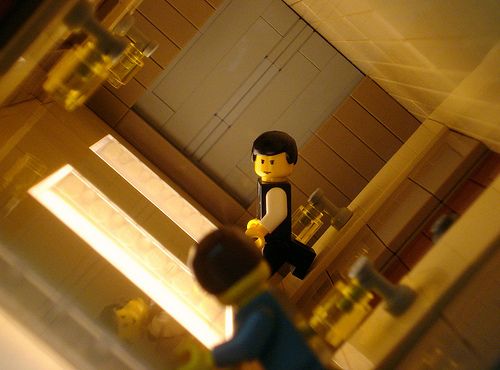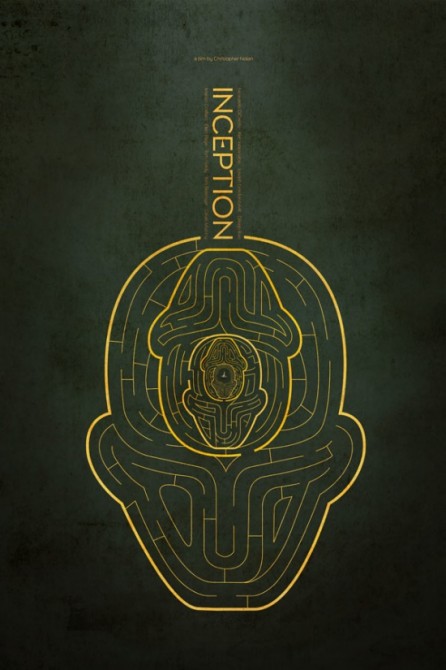 Photo by Alex Eylar
Photo by Alex Eylar
There’s been great coverage on the sound of Inception. Mix Magazine, Soundworks Collection, and Wired Magazine posted articles and videos about sound editorial and mixing while Coffey Sound interviewed production sound mixer Ed Novick about his experiences on set. Nevertheless, I attempted to blaze some new trails below in a brief interview with sound supervisor and designer Richard King about Chris Nolan’s latest.
Designing Sound: In an interview with Film Comment magazine Nolan said this about the use slow-motion in film, “The audience doesn’t understand what it means but it gives something a visceral resonance.” While slow-motion visuals achieve this resonance he’s talking about, how did you and your team accent sequences with sound design?
Richard King (RK): We didn’t adhere to any particular rules in approaching these sequences, it more depended on what was happening and the particular application of the change in picture speed. In general we either ignored the change or used sounds which had nothing to do with what was going on.
DS: You’ve stated before that Nolan doesn’t spot films the way most directors do. What is the inception of the soundtrack on his films and what kind of conversations does he have with you and the mixers before you start work?
RK: I do send him mix-downs of particular sequences for feedback well before the first temp mix. And notes sprinkle in as he’s cutting the film and ideas about sound occur to him. But I think he wants to see what we come up with, knowing we can quickly alter it on the stage if needed.
DS: You do a lot of recording in the field on your shows, how do you decide what to record and what to pull from you existing libraries?
RK: I feel it’s very important to get new sounds for each film. It’s so important to get the sounds which you feel and imagine could be there. There’s always a lot of manipulation afterward of course, but recording new raw material is so important. I’d love to record everything every time, but the most important thing is to find the sound which provides that feeling you’re looking for regardless of where it comes from.
DS: in these recording sessions are props, vehicles, or weapons cast with their literal on-screen counterparts? How do you decide on what to embellish sound-wise while recording?
RK: We do cast the vehicles and weapons, sometimes with a duplicate of the picture prop, sometimes not. It all depends on the film. The film tells us if accuracy is important (or would even be noticed and add something to the audience’s experience), or if what we want is a particular ‘sound’. The film tells us how subtle or how bold to be with ‘sweeteners’.
Photo by Ibraheem Youssef
 DS: I felt that specific movement in background ambiences were subtle and of what I could remember (the interior airport) they had a ghostly or muffled character. What are Nolan’s thoughts on how backgrounds are used in his films? Does it differ from the approach of other directors you work with?
DS: I felt that specific movement in background ambiences were subtle and of what I could remember (the interior airport) they had a ghostly or muffled character. What are Nolan’s thoughts on how backgrounds are used in his films? Does it differ from the approach of other directors you work with?
RK: It all depends on the situation. The airport at the end is an emotional sequence, the conclusion of the film and music in this case lends more emotion. The establishing shot of Paris (for instance) early in the film relies on background sounds to establish a new location. There are no rules, it depends on the situation.
DS: I read that this is the first film of this scale that you predubbed in-the-box. How well did this work for Inception? Do you plan to mix future shows this way?
RK: It worked great. We learned a lot, but I don’t think we would have changed very much in our procedure. Lora, Gary, Tony Pilkington of WB engineering, Andrew Bock and I had an ongoing email thread and many phone conversations about it beforehand so we had thought through most of the pitfalls. As far as doing it again, it depends on the director. The schedule has to be designed very early with this approach in mind. Visual effects delivery and the completion of the score have to be accomplished earlier than usual. I know Chris will mix this way from now on.
DS: You’ve mentioned in other interviews that there were sound cues that helped the transition between the different levels in dreams? Were there any other changes in sound from level to level?
RK: There’s an additive sound which functions as the cue for the audience. At Chris’ suggestion, we also altered the pitch of all the real-world sounds when we transition from level to level (much like the watch ticks change speed in the first sequence). So all the sounds slow and change and become a different sound in the next sequence – interior jet roar becomes traffic when we transition to the first dream level, for instance.
Just a little “internet etiquette” thing… you should give credit to those who made the artwork you posted in article, as they are fan-works.
Great interview as always. Love this movie so much and I can’t wait till it comes out on Blu-ray to hear it again in lossless audio. Hopefully by the end of this year.
I’d like to hear comments from the sound team on Inception about the choice of wall to wall music and how this affected the mix. This has been a divisive issue in many online discussions on the merits of the sound in Inception. It would be good to see DesigningSound cover that aspect also.
I hope everyone is picking the awesome stuff Richard said- there are some special nuggets in there that are worth digging for.
You’re right Charles. I met Richard at the Sound Show for Dark Knight. He let me pick his brain, till they kicked us out of the theater. I try and read every article with him or you in it.
Thanks Will, fixed.